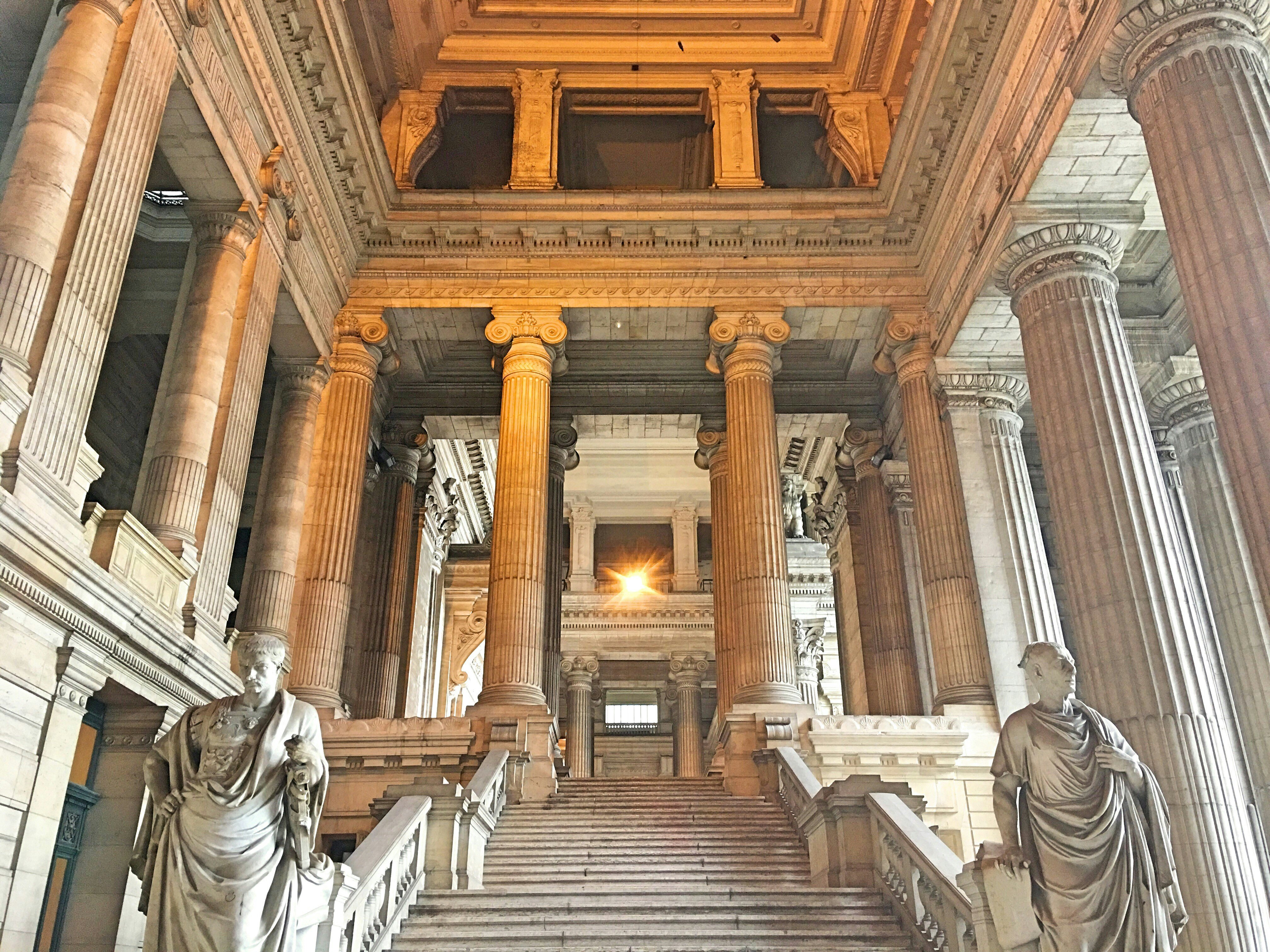
A stroll in Marolles: what to do in Brussels' hippest area
Sep 19, 2019 • 3 min read

Porte de Hal, an imposing gatehouse tower © Analia Glogowski / Lonely Planet
A stone’s throw from the chic Sablon quarter of Brussels lies its scruffy cousin the Marolles; rough around the edges and effortlessly authentic. The area is steeped in history and harbours myriad art galleries as well as the city’s most famous flea market. Get lost wandering its alleys, where trendy vintage shops rub shoulders with working-class bars, and where bargain-hunting tourists and local old-timers alike drink pints on cobbled street terraces.

The Marolles district stretches from the imposing Palais de Justice and the elevator on Place Poelaert, to Brussels-South railway station and the Porte de Hal. Beginning your stroll on Place Poelaert is a great way to catch views of the neighbourhood and the Brussels skyline. These are the must-sees in one of Brussels’ most beloved neighbourhoods.

Explore the mammoth Palais de Justice
Watching over the neighbourhood like a giant sentinel is the scaffold-clad Palais de Justice, which is often the butt of jokes as it's been under renovations for three decades. Dubbed the 'Palace of Scaffolding', some people ask what the building did to end up behind bars. It was built at the end of the 19th century and was at that time the biggest courthouse in the world. The golden-lit interiors are still spectacular howerver, defying the decaying roofs and cracked floors.
Beer in Brussels: a quaffable chronology
Watch the sunset from Place Poelaert
Next to the Palace of Justice is Place Poelaert, named in honour of architect Joseph Poelaert who designed the palace. It is a magnificent spot from which to take in the Marolles, and if you're there in the evening, it's spectacular for sunsets too. From here, you can take the glass elevator down, and exit right on Rue Haute.

Stroll down Rue Haute and Rue Blaes
Walk up Rue Haute and venture into one of the scores of antique shops. With vintage gems ranging from Middle Eastern rugs to '50s furniture, it’s easy to lose track of time. For an original Belgian souvenir, hit the Belge une fois shop. Rue Blaes runs parallel to Rue Haute and boasts just as many antique dealers and interior design shops. Explore the connecting cobbled alleys to discover neighbourhood houses and some of the city’s Art Nouveau buildings, such as Victor Horta’s Jardin d’Enfants on Rue Saint-Ghislain.

Hunt for vintage finds at Place du Jeu-de-Balle
The Place du Jeu-de-Balle is the true heart of the neighbourhood and home to Brussels’ most famous flea market. Open every day from 6am to 2pm, the market offers bargain seekers anything from china, fur coats and old mirrors to Zenit cameras and turntables. Being such a tourist magnet means prices tend to be higher than at your average street market.

Visit Brussels’ oldest church
Built during the 13th century in Romanesque style, Notre-Dame de la Chapelle survived a fire, bombings and pillages, and was subsequently reconstructed borrowing Gothic elements. Our Lady of the Chapel contains the tomb of Dutch painter Pieter Brueghel the Elder, and many artistic treasures such as paintings, sculptures and stained-glass windows. If you're hungry from all that vintage shopping, Friture de la Chapelle (Rue Haute 25) right outside the church will serve you some of the city’s best fries.

See a dance performance at the Brigittines Chapel
A two-minute walk from Our Lady of the Chapel and past the skatepark lies the Renaissance-style single-nave Brigittines Chapel, now an arts centre for contemporary dance and performance. Since its construction in the 17th century, the chapel has served as a school, a warehouse for books, a military pharmacy, a pawnshop, a ballroom and even a slaughterhouse. Today, it hosts the Brigittines International Festival and its programming mostly focuses on choreographic works.
How to live like a Local in Brussels
Admire the city’s last fortified gate
On the opposite side of the Marolles, visit the Porte de Hal or Halle Gate, one of Brussels’ most emblematic buildings. The last of the city’s fortified gates has formerly housed a Lutheran temple, a seeds warehouse and a prison. These days it contains a museum and offers a great panoramic view. Relax in the surrounding park and have a bite at one of the numerous nearby cafes and restaurants such as Crab Club or Robinet.















